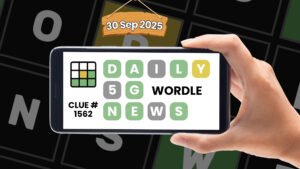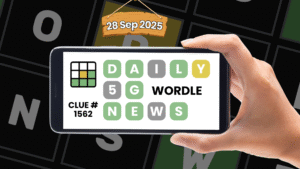Wordle #1553 tested many players with a familiar yet tricky word. Players found it accessible once they locked in certain letters. Below, I provide accurate hints that lead to the answer. If you want to attempt it without spoilers, skip ahead. All information comes from trusted sources.
Hints & Clues
I offer several clues in increasing specificity. Use them to narrow down your guesses.
- The first letter of today’s answer is L.
That hint eliminates all words that begin with any other character. - The answer ends with R.
That restriction helps especially after you guess several words and focus on positions at the end. - It contains two vowels: A and E.
Those vowels occupy some of the five positions. Knowing them early reduces guesswork significantly. - The word uses no repeating letters.
Every letter appears only once. That rule rules out words with duplicate characters. - The meaning relates to something that occurs subsequent to something else or comes later in time.
That usage helps you infer that the word often appears when speaking about events or plans. - The word feels common in everyday speech.
People use it when discussing what happens next or what follows in schedule or plan.
Today’s Answer
The answer for Wordle #1553 is LATER.
Meaning & Usage
- Later refers to a point in time coming after the present or after some event. People use it to refer to something that will happen subsequently.
- Speakers say “see you later” when they plan to meet again. They use “later” in sentences like “We can do it later” or “Later, we will decide.”
- Writers and speakers often use it when describing schedules or sequences. For example, one might say “The dinner happens later” or “Later in the week, I will send the report.”
Why This Puzzle Felt Moderately Challenging
Wordle #1553 felt moderate in difficulty because the word uses common letters but still demands correct placement. The first letter hint, starting with L, gave many players a direction. The ending R eliminated many guesses that end in other letters. The presence of two vowels gives flexibility but also risk if placed wrongly. The requirement that no letters repeat pushed players toward words with more variety.
Starter guesses that include A, E, and common consonants like L, R, and T offered good feedback. Once players saw yellow or green indicators for A and E, they likely tested arrangements that matched pattern L _ A T E R or L _ _ E R to find the correct order.
Players who used guesses like “SLATE,” “ALERT,” or “LATER” early saw strong results. Words like “ALERT” test the positions of A, E, L, R, and T. That pattern reveals.
Strategy Tips Based on This Word
- Start with words that include A and E because those appear frequently in everyday English.
- Use common consonants such as L, R, T to structure guesses.
- When you know no letter repeats, avoid guesses with duplicate letters. That preserves your guesses for unique letters.
- When someone tells you the word ends with a particular letter, use that to refine your guesses.
- Use meaning clues. When the clue points to time or sequence, then think of words related to future, subsequent, or later events.
Missed a day? Check out yesterday’s Wordle#1551 solution here.








